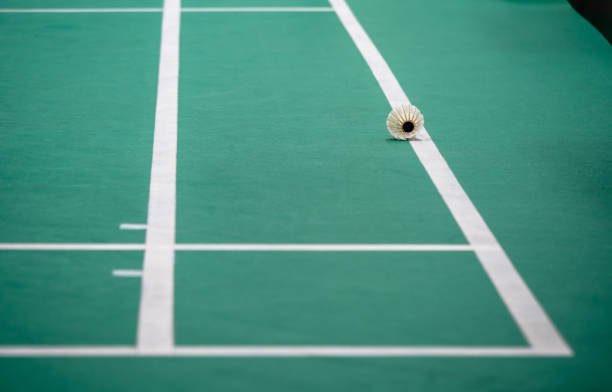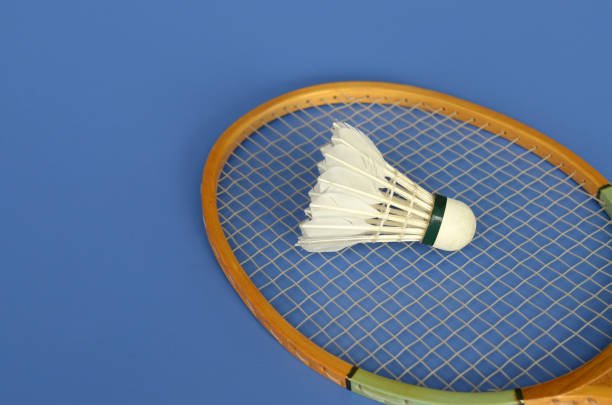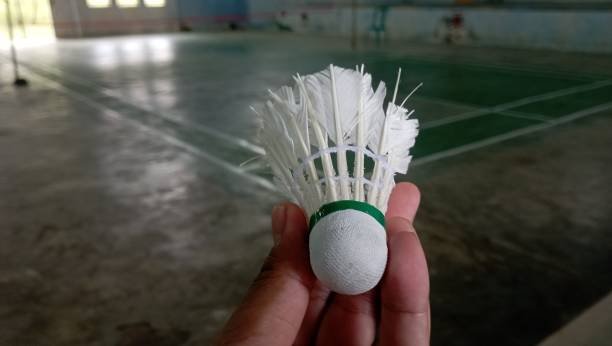When building a badminton court in a sports facility, selecting the right type of surface is crucial for both the safety and performance of athletes. Each type of surface has its own pros and cons, so understanding the differences and knowing which material works best for the main users of the facility is essential for making an informed decision. Below, we’ll take a detailed look at several common badminton court surfaces, their benefits, and potential drawbacks to help facility operators choose the best option for their needs.
Synthetic Badminton Court Surface

Synthetic badminton courts are typically made of materials like PVC (Polyvinyl Chloride) or PU (Polyurethane), with a synthetic mat covering the top of a wooden or other rigid base. The Badminton World Federation (BWF) has officially approved synthetic courts for international competitions, ensuring they meet the high standards required for top-level play.
Pros:
- Low Maintenance Costs: Compared to wooden courts, synthetic courts are much easier to maintain and clean, as they are less susceptible to moisture damage or warping.
- Affordable: Synthetic courts are much less expensive to build and maintain compared to high-end wooden courts, making them a suitable option for facilities with budget constraints.
- Safety: Synthetic surfaces typically provide better slip resistance and impact absorption, reducing the risk of injury to players.
- Durability: Synthetic courts are highly durable and resistant to wear, making them ideal for long-term use.
- Variety of Designs: Synthetic courts can be customized with a wide range of colors and patterns, enhancing the appearance and functionality of the court.
Cons:
- Adjustment Period: Players accustomed to wooden courts may experience some difficulty adjusting to synthetic surfaces, especially during their first few matches.
- Hardness: While softer than cement, synthetic courts still provide a firmer playing surface, which can place stress on joints, particularly during long matches.
Wooden Badminton Court Surface

Wooden badminton courts are typically made of high-quality hardwood or composite wood materials. These courts are renowned for their excellent shock-absorption properties and natural traction, which makes them ideal for indoor badminton competitions, especially at the professional level.
Pros:
- Superior Shock Absorption: Wooden courts provide excellent cushioning, which helps protect athletes’ knees and joints from impact, reducing the risk of injury.
- Elegant Appearance: Wooden courts have a premium look and feel, which adds an element of tradition and elegance to the sports environment.
- Ideal for Indoor Matches: Wooden courts are perfect for indoor settings where environmental conditions are controlled and the playing surface needs to remain stable.
Cons:
- High Maintenance Requirements: Wooden courts require regular maintenance to prevent damage from moisture, and they need to be refinished periodically to maintain their optimal condition.
- Expensive: The cost of both constructing and maintaining wooden courts is higher than synthetic or concrete surfaces, making them less suitable for budget-conscious facilities.
- Specialized Footwear Required: To ensure optimal traction, players must wear non-marking shoes with good grip. Playing on a wet or slippery wooden court can lead to accidents and injuries.
Concrete Badminton Court Surface

Concrete courts are often used for outdoor badminton courts. Made from a mixture of concrete and cement, these surfaces are typically much cheaper to build compared to other types of badminton courts.
Pros:
- Low Construction Costs: Concrete courts are far more affordable to construct than wooden or synthetic courts, making them a good option for facilities with a limited budget.
- Durability: Concrete is a tough, long-lasting material, ideal for outdoor courts exposed to the elements.
Cons:
- Increased Injury Risk: Concrete courts are very hard and do not offer adequate shock absorption, increasing the risk of joint and muscle injuries. Playing on such surfaces can strain the knees and ankles, especially during intense matches.
- Lack of Traction: Concrete does not provide sufficient grip, which can lead to slips and falls during play.
- Aesthetics: Concrete courts often lack the visual appeal of wooden or synthetic courts and can appear basic or unattractive.
Acrylic Badminton Court Surface

Acrylic badminton courts are typically constructed using an asphalt or concrete base, which is then coated with an acrylic material. These courts are popular for outdoor use in public parks or recreational areas.
Pros:
- Low Maintenance: Acrylic courts are relatively easy to clean and maintain, requiring fewer repairs compared to wooden surfaces.
- Affordable: Compared to other surfaces like wood or synthetic materials, acrylic courts are more cost-effective to build and maintain.
- Durable: Acrylic is a highly durable material that can withstand regular use without wearing down quickly.
- Color Variety: Acrylic courts are available in a range of colors and designs, adding vibrancy and visual appeal to the playing surface.
- Popular Choice: Acrylic is one of the most popular badminton court surfaces due to its balance of cost and performance.
Cons:
- Hardness: Acrylic courts are relatively hard, offering less shock absorption compared to synthetic or wooden surfaces. This can lead to increased stress on the joints during long games.
- Slippery When Wet: If not maintained properly, acrylic courts can develop slippery spots, particularly when algae or moss grows on the surface due to humidity or poor drainage.
Overall Comparison and Recommendations
Choosing the right badminton court surface depends on factors such as budget, expected use frequency, maintenance requirements, and the level of competition. For high-level competitive play, wooden or synthetic courts are typically the best choices. These surfaces offer superior comfort, safety, and performance, though they come at a higher initial cost.
For recreational or outdoor use, acrylic and concrete courts provide more affordable options, though they may lack the shock-absorbing properties of synthetic and wooden courts. If cost is a major concern, these surfaces can still offer a decent playing experience for casual players.
When selecting a badminton court surface, it's crucial to balance the long-term benefits with your facility's financial and operational constraints. Carefully assess the needs of your athletes and the primary use of the courts to ensure that you choose the most appropriate material for your badminton facility.
Final Thoughts
Whether you're a competitive badminton player or just enjoying the sport for fun, the surface you play on can make a big difference. For those serious about improving, playing on high-quality surfaces like synthetic or wooden courts can help enhance your skills while reducing the risk of injury.
If you're just playing casually, outdoor surfaces such as acrylic or concrete can still offer a decent experience. Ultimately, the right court surface ensures both enjoyment and safety, supporting your growth in the sport.
For more details on badminton court design, check out our comprehensive guide to create the perfect playing environment.